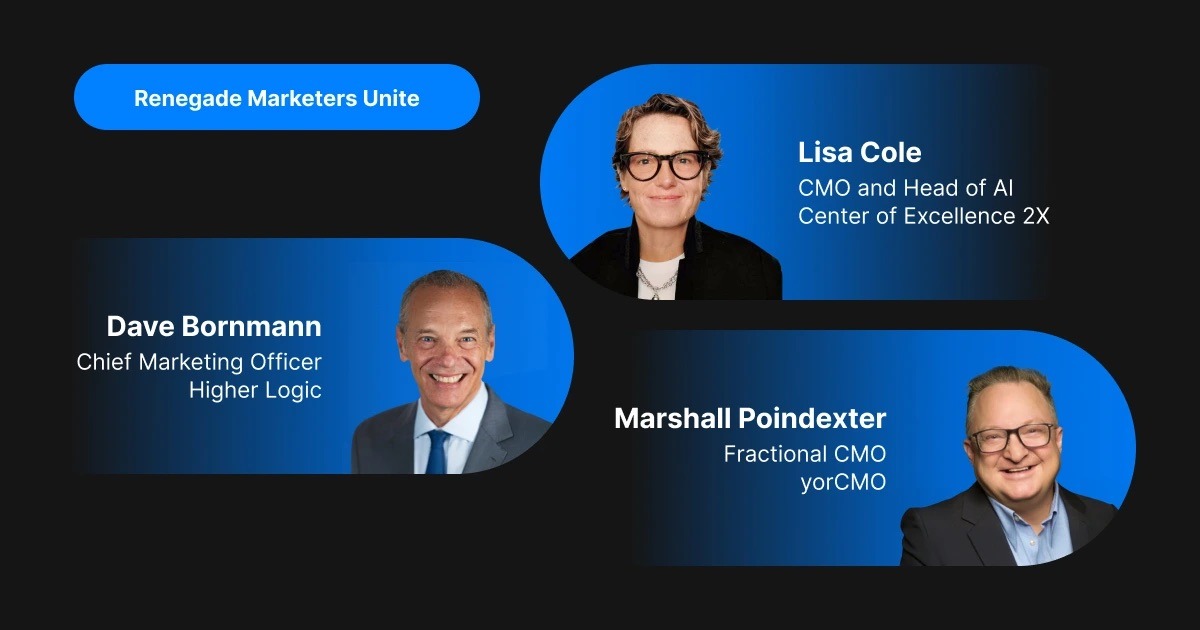July 2, 2025 | Blog
Revenue loss starts with execution lag

Why marketing execution is now a board-level concern
Enterprise CMOs are no strangers to complexity. But today, complexity isn’t the challenge; it’s the failure to execute at the speed, scale, and precision the business demands.
AI. Personalization. Real-time performance data. The ambition is clear. What’s murkier is how to operationalize that ambition. And increasingly, the execution gap isn’t just a marketing problem. It’s a business risk.
The Avasant B2B Marketing Execution Report puts it plainly: execution has become the silent bottleneck. While 72% of marketing leaders say AI and automation are strategic priorities, most struggle to deploy them meaningfully, not because the vision is wrong, but because their organization models can’t keep up.
And when execution fails, revenue suffers.
The hidden risk in your operating model
Execution challenges don’t stay buried in operations anymore. When execution lags, revenue slows. When teams stall, the board sees it. What used to be an “ops issue” is now an enterprise bottleneck.
The Avasant data paints a clear picture:
- 70% of CMOs cite execution lag as their biggest operational bottleneck
- Only 23.9% of enterprise marketing budgets go to growth-driving programs
- 55.9% is locked into headcount, making it harder to flex or scale
The takeaway? Enterprise marketing teams aren’t underperforming because they lack strategy. They’re underperforming because their execution capacity is inflexible and under-optimized.
It’s not a resource gap. It’s a structural one.
The instinct when performance slows is often to add more people, tools, or programs. But the best CMOs know: more isn’t the answer; optimizing is.
Enterprise marketing today requires elastic capacity, the ability to shift delivery volume and focus across regions, channels, and business units, without breaking systems or burning out teams. But that kind of flexibility doesn’t come from legacy structures.
Execution today is:
- Cross-functional
- Insight-powered
- Multichannel
- Highly personalized
- Time-sensitive
And when your model isn’t designed to support this? That’s when revenue impact suffers most. Deadlines slip. Opportunities are missed. Teams spend more time chasing checkboxes than driving real outcomes.
The performance blueprint is changing
Leading CMOs aren’t standing still. The Avasant report shows that high-performing organizations are redesigning their operating models, not just their programs.
A few key shifts stand out:
- 56% of outsourced marketing spend now goes to campaign delivery, making it the top outsourced sub-function
- SaaS organizations allocate 42.6% of their total marketing budgets to outsourced execution, the highest across all sectors
- High-growth companies spend 46% more on execution as a share of budget than slower-growth peers
This isn’t outsourcing for cost savings. It’s outsourcing as a performance multiplier. It’s about building hybrid delivery models that bring speed, specialization, and scale, without bloating headcount or adding agency drag.
Operational blind spots are now strategic risks
Execution isn’t just about getting things done; it’s about enabling the right decisions at the right time. And when core intelligence functions like analytics, tech enablement, and performance reporting are misaligned or deprioritized, the cost compounds fast.
CMOs are increasingly redesigning these functions not for efficiency alone, but to close insight gaps that stall growth:
- Marketing analytics that expose where performance breaks down
- Data enrichment that sharpens segmentation and personalization
- Tech stack activation that unifies disconnected tools
- Reporting that fuels faster GTM decisions
Done right; this unlocks visibility at the executive level, supporting strategic planning, governance, and cross-functional cohesion.
Because without insight, execution at scale becomes guesswork. And no board signs off on guesswork.
Redesigning for resilience, not just resourcing
The shift toward hybrid delivery isn’t just a structural pivot; it’s a strategic one. More CMOs embrace subscription and project-based models that offer flexibility, speed, and continuity in the face of mounting delivery demands.
These models aren’t just about scaling up. They’re about ensuring your marketing machine doesn’t stall when priorities shift or capacity is strained. Here’s what they make possible:
- In-house teams remain focused on strategy, brand, and stakeholder alignment
- External partners absorb volume-heavy, high-skill execution across campaigns, ops, and analytics
- Subscription delivery ensures consistent throughput without headcount strain
- Sprint-based resourcing lets teams flex on demand for launches, regions, or program spikes
It’s a model designed to absorb volatility and protect performance, without sacrificing clarity or control. In today’s market, that’s not just a nice-to-have. It’s a leadership imperative.
Execution is now an enterprise lever
This isn’t just a marketing problem. It’s an enterprise opportunity.
Boards are asking for faster pipeline velocity, clearer ROI, and lower CAC. And marketing can deliver, if execution becomes a core strategic lever, not a buried operational layer.
That’s what leading CMOs are unlocking: models where execution fuels growth, rather than blocking it.
Work your delivery model
The path forward isn’t about adding more bodies; it’s about redesigning how work flows through marketing.
Download the Avasant B2B Marketing Execution Report to explore the data behind the shift to hybrid, high-impact execution.
See how 2X helps CMOs redesign for scale with a marketing-as-a-service model built for execution speed, specialist depth, and operational agility.
You’re not just executing more. You’re executing smarter.


